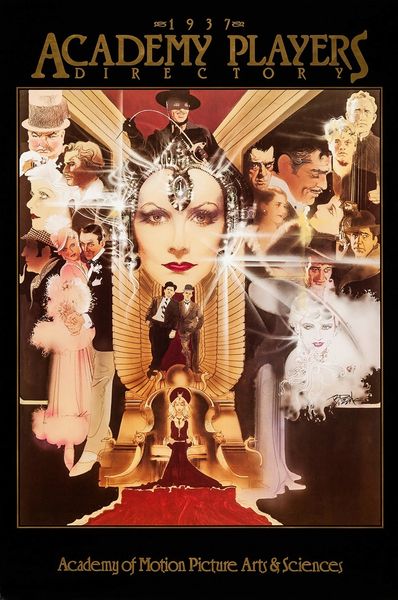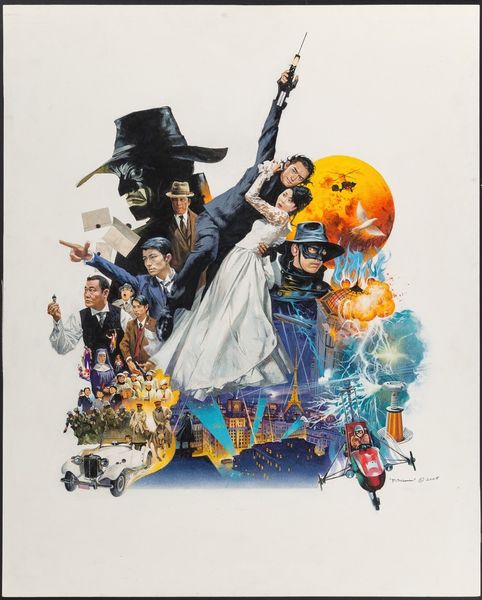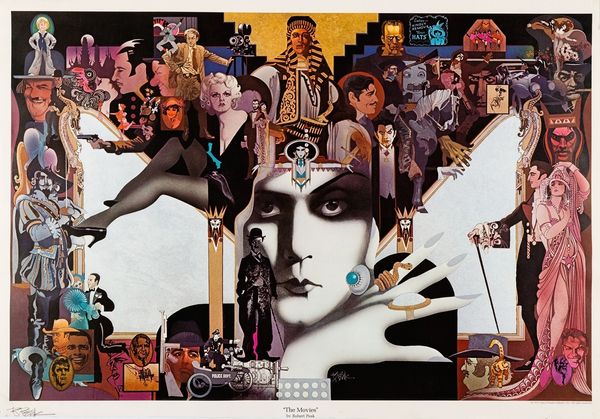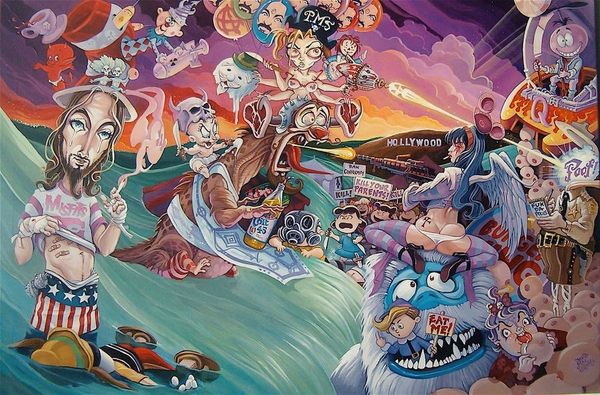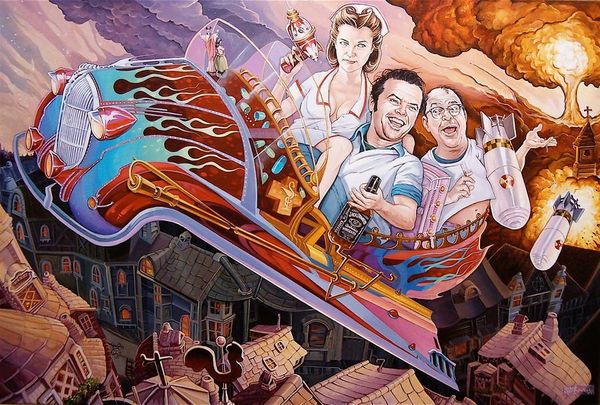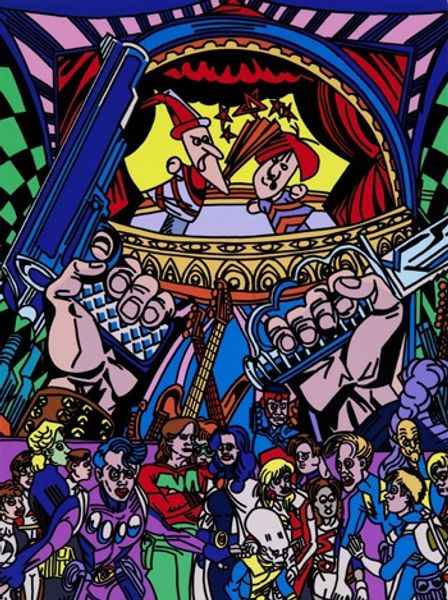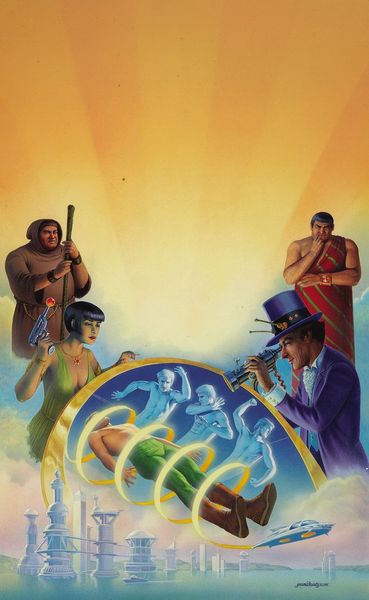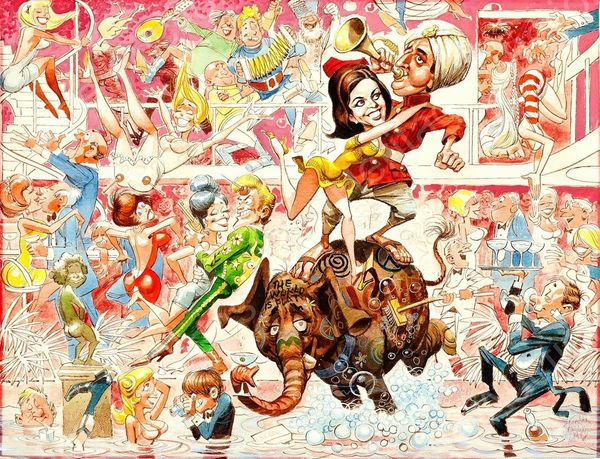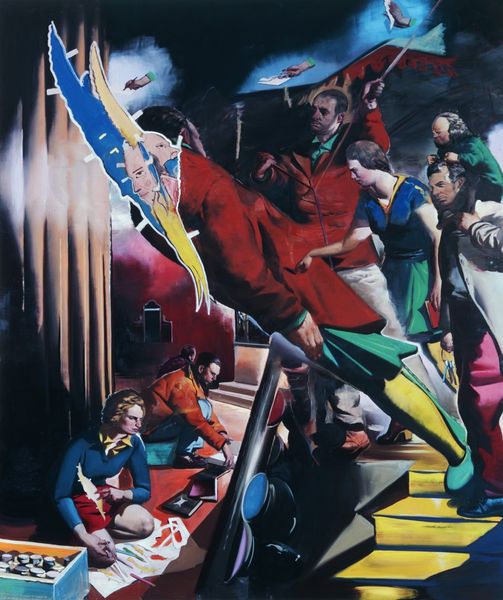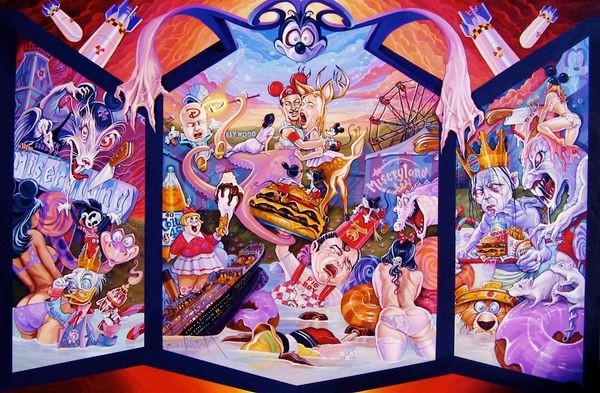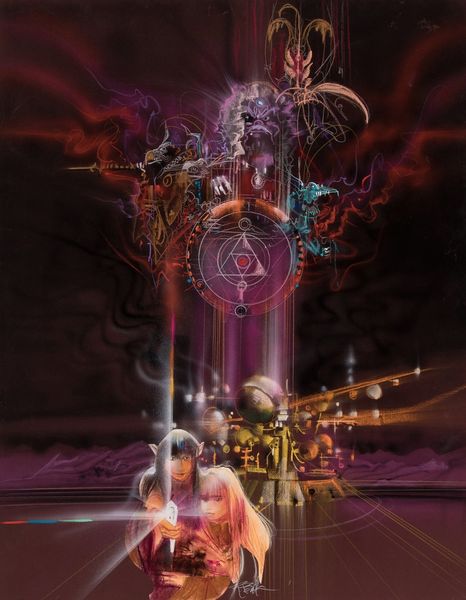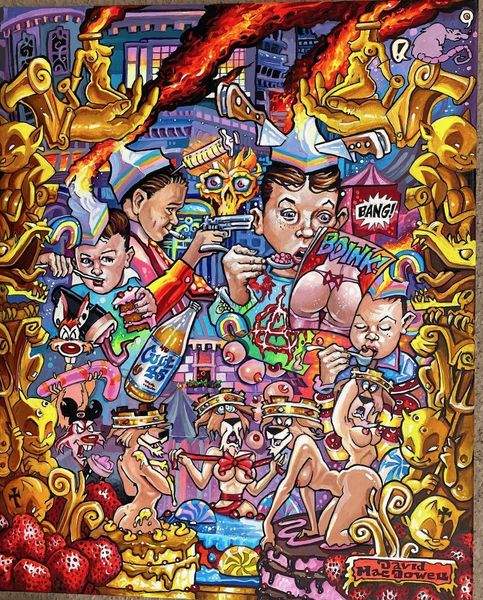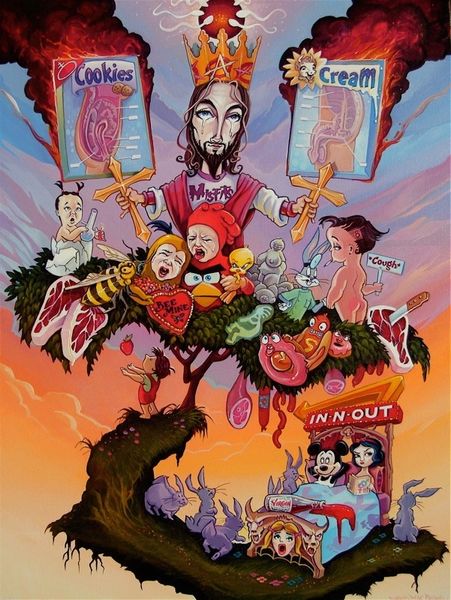
mixed-media, painting, poster
#
portrait
#
mixed-media
#
contemporary
#
painting
#
graffiti art
#
figuration
#
naive art
#
poster
#
mixed media
#
erotic-art
Copyright: Modern Artists: Artvee
Curator: Robert McGinnis's piece, "007 James Bond; Agents, Villains, and Babes" from 1999 is a striking example of contemporary mixed-media artwork. Editor: Well, right off the bat, it feels… intensely crammed. There’s almost too much happening; my eye doesn’t know where to land. The sheer volume of figures and action is quite overwhelming! Curator: That's a very valid observation. Let’s consider the layers: you've got your recognizable Bond actors portraits, rendered against scenes of his adventures in this central chaotic panel, itself set in an ornate frame that looks to be collaged. Then all these figures surround it. For me, it speaks to how pop culture, especially Bond films, can become a product in and of themselves. What’s depicted and then the material—what all this layered material adds to the narrative about film and our relationship to it. Editor: And those materials also imply access, and also commodification! Like all the various stages through which images have to travel to reach consumers. These depictions of idealized women—the so-called Bond girls—positioned decoratively almost, echo the films' objectification, but maybe also points out a specific culture around this film franchise, and the posters and imagery that go along with that culture. Is it celebration or critique, or both? Curator: Precisely! It could certainly be both. Think about the economic machine churning out image after image, and how figures are chosen, posed, cropped, manufactured as images for circulation—I wonder what was available, how these figures became ready-to-use. Are the source materials posters or other memorabilia of previous Bond film releases? What determined McGinnis's decisions to arrange the scenes and figures in this particular manner? How does the method influence meaning? Editor: This piece underscores the cultural role of Bond films and action media specifically in our shared history. What values do they promote, who has access, who’s left out? Its collage-like style captures a postmodern attitude to source imagery—and poses questions about authenticity, originality and gender that have particular currency today. Curator: Indeed, and considering those mass-produced processes involved brings our focus to those production values, raising those interesting questions on culture at large. Thank you, those observations truly add so much. Editor: Thank you; thinking about art from a historical standpoint brings in elements beyond the material construction. Together we get something deeper.
Comments
No comments
Be the first to comment and join the conversation on the ultimate creative platform.
